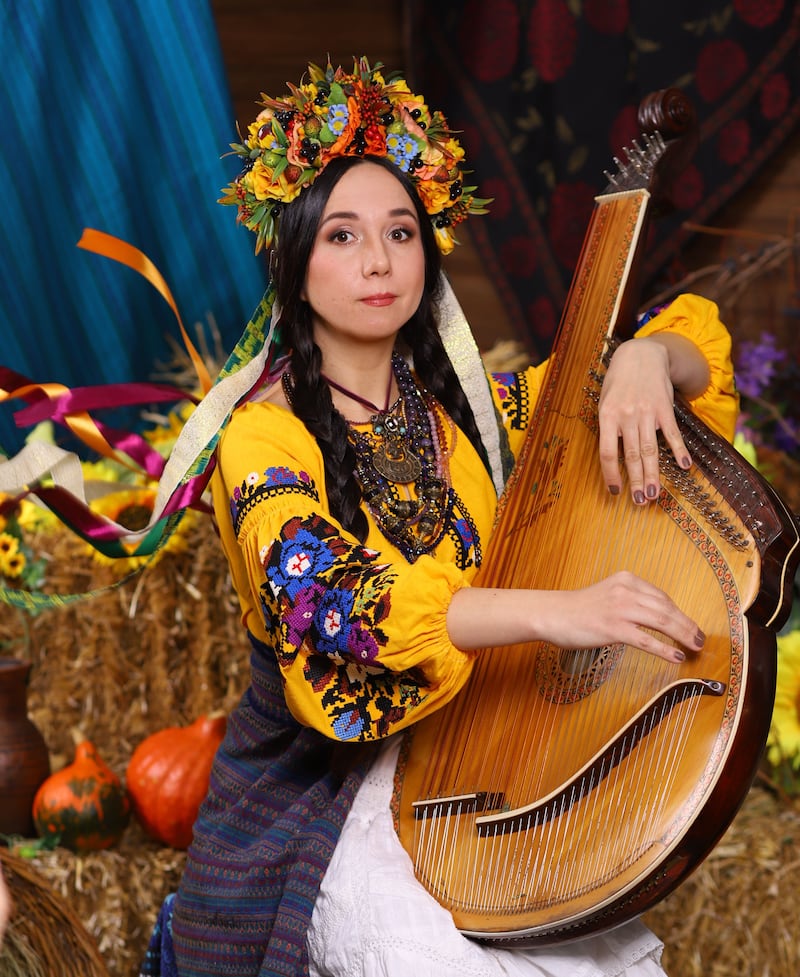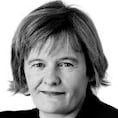If the only constant in life is change, then we can perhaps find solace in the experience of our traditional musicians, singers and dancers, who are “part of a living tradition, one continually evolving and renewing itself”, according to Liam O’Connor, the head of the Irish Traditional Music Archive.
In recent years that evolution has been driven partly by the arrival in Ireland of traditional artists from all over the world, and it was with this in mind that O’Connor conceived of a concert to celebrate the multicultural influences that ebb and flow through Irish tradition, adding another layer of creativity upon the layers so painstakingly laid down by those who came before.
Reflecting Migrations will feature the Persian-Irish band Navá, the Australian guitarist, composer, producer and didgeridoo player Steve Cooney, the Nigerian-Irish singer Esosa Ighodaro, and the Ukrainian bandura player Kseniya Rusnak, among many others. It’s the main event at the National Concert Hall on Sunday, as part of a weekend festival under the banner of the NCH’s biannual Tradition Now series. The wide-ranging musical styles of the line-up that O’Connor and the Irish Traditional Music Archive have put together with the Dublin venue promise to make it a vibrant event.
One of Navá's founding members is Shahab Coohe. With three distinctly different albums so far, the Iranian-born multi-instrumentalist and his band have never shied from mining the space between Persian and Irish musical traditions.
READ MORE
“I’m playing a different type of music where I’m trying to reflect my background and my heritage,” Shahab says, “and I think it’s been influenced by this country, something that I’ve gone through in Ireland. It might be something about Irish society and Irish culture, what I see on the street, what I hear on the TV or when I go to concerts and listen to bands like The Gloaming or Cormac Begley or the National Symphony Orchestra. It’s a mixture of all these things that have helped me develop my artistic personality.”
[ Navá: ‘This album is definitely a product of Ireland’Opens in new window ]
The drive to explore the liminal spaces between and across both traditions is a strong one for Navá, and Shahab doesn’t take any of their recent opportunities for granted. “Of course we’re bringing diversity with the band, and we’ve been doing it for the past seven years,” he says. “But we feel very comfortable with this fusion in Ireland. Nowadays we’re experimenting with different traditions, knowing that we’ve been given that chance here and that we’re valued here in Ireland, which is a great advantage to have as a band.”
Esosa Ighodaro is a singer, actor and producer who has forged a reputation as a highly original interpreter of songs in the Irish language.
“I’ve been in Ireland for over 30 years,” she says. “I moved here when I was a child, so my realisation that I wanted to be a singer happened here, and that’s obviously a big part of my identity, but it wasn’t until I started singing with an intercultural gospel choir that I was asked to take a solo that was in Irish.
“We were singing songs from different parts of the world in different languages, but we rarely did anything in Irish. It was Silent Night or Oíche Ciúin, and I think at the time I was the only black member of the choir who had studied Irish, so being able to get the sounds and pronunciation right was all fine. I’ve always loved the sound of the Irish language. Even though I learned it at school, I never felt I had permission to speak it, but being able to sing in Irish is something that I really enjoy.”
Ighodaro has collaborated with Liam Ó Maonlaí and performed at the Creative Connexions festival in Sitges, in Spain, with a band called Soul Ceol. Uilleann pipes, whistle and bodhrán were the backdrop to her vocals, and it was a marriage that felt very natural to her.
“I love Irish songs and I love the Irish language,” Ighodaro says, “and putting that together with something that feels more ethnically me, it’s an amalgamation that just feels right.”

Kseniya Rusnak has navigated a traumatic course over the past year, having been forced to leave her home country of Ukraine after Russia invaded. She travelled with her son and her mother, and with little more than a backpack and her beloved bandura, which she describes as a kind of Ukrainian harp.
Speaking through her interpreter, Rusnak paints a remarkable picture of a journey from a war zone to the stage of the National Concert Hall. “I’ve been in Ireland exactly one year, and even though I’ve felt a range of complex emotions it’s been a fantastic year,” she says. “I’ve been very happy to be in a duo with [the harp player] Paul Dooley and to experience Celtic harp, because it’s a symbol of Ireland, and the bandura, the Ukrainian harp, is the symbol of Ukraine, so it’s very symbolic that both instruments are so meaningful to our countries.
When Paul and I play together, I sometimes forget what kind of music we’re playing. Is it Irish or is it Ukrainian?
“I’ve been dreaming about playing with a Celtic harp for years, so this is a great opportunity, and it feels like this is an immersion of both cultures into each other. It feels like a lot of enrichment of Ukrainian and Irish culture, and it feels like there’s a mutual benefit there.”
The ease with which bandura and harp coalesce astounds Rusnak. “When Paul and I play together, I sometimes forget what kind of music we’re playing,” she says, smiling broadly. “Is it Irish or is it Ukrainian? The cultures are so intertwined, which I find fascinating. It’s amazing how similar they can be.”
Reflecting Migrations is at the National Concert Hall, Dublin 2, on Sunday, June 11th, as part of its Tradition Now festival



















